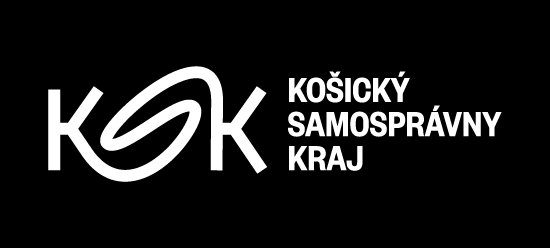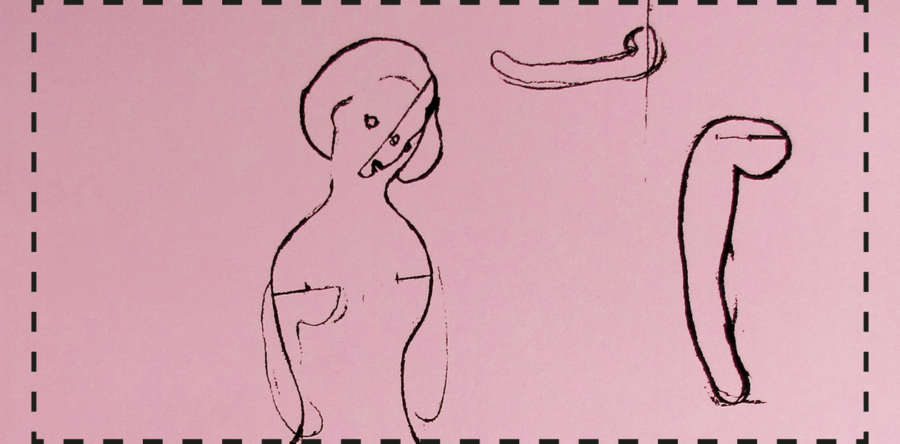opening: 13. 8. 2020, 6 p.m.
duration: 14. 8. 2020 - 20. 9. 2020
curator: Richard Gregor
East Slovak Gallery, Hlavná 27
Monumental fragility in the work of Eva Moflárová
Eva Moflárová (* 1981 in Liptovský Mikuláš) has been visibly present (not only) on the Košice scene since the time of her studies. In the early years, she was influenced by her teachers Juraj Bartusz and Adam Szentpétery with her belief in the power of individual (even one-off) artistic gestures, while she kept the minimality of the expression, which has its roots in this period, to this day. He alternates between painting and sculpture, but rearranges their borders in his own way - he engages in "shadow" painting in three-dimensional work, while the hanging painting does not deny the sculptural basis. For Moflár's thinking, the key is a measure, almost all of her works are a magnification of their theme, concept, specific shape or spatial reasoning. The first, abstract-gestural period has been replaced by parenting topics for a relatively long time. In them, the author, unlike other contemporary artists, does not deal with specific personal contexts and stories, she is more interested in the universal side of motherhood, she perhaps follows its rituality more than intimacy. Modular thinking, multiplication in a sense up to pictogram units proves the effort to make her artistic intention as versatile as possible. It is all the more interesting to what disturbing form it manages to place this universality - the apparent immediacy of the motives hides various problematic nodes, often subconscious or just suspected.
In a sense, Moflárová is a typical representative of her generation. She was a student of the founding year of the then new Department of Fine Arts at the Faculty of Arts of the Technical University in Košice. Dozens of students met here, for whom the limits and conventions of any genre of art, especially painting, sculpture and video, have ceased to be taboo. Therefore, they basically became the first bearers of a truly pluralistic postmodern art, emerging in a gradually experienced, authentic and freely postmodern situation, taking place in our specific environment. After graduating in an extraordinarily dynamic workshop, the author entered the model reality of a young artist: her name sometimes appears at exhibitions or auctions, she becomes a double mother and later begins to work as a pedagogue on her alma mater.
The common denominator of her reflections on (her own) motherhood is a certain concern, but it can be traced in the author's work from the beginning. One part of the problem is the already mentioned enlarged scale of paintings and objects, a scale that announces the sculptural distance, inviolability, even in modular objects, which theoretically the viewer could assemble into various constellations. Rather than exhorting interactivity, however, to feel an unwritten frontier behind them, "two-dimensional" sculptures are large but fragile. Monumental fragility is common to many in the author's work - from the drawing, which looks subtle on newer large-scale canvases, to the construction of multiples, the stability of which sometimes rests almost on eye illusion (on the border of physical laws). The author decently but mysteriously talks about her self-knowledge, about finding herself in a physical, personal and artistic sense, by which we can to some extent decipher the symbolism she uses. Trying to generalize his view, pictogram visuality is like an excerpt from the characters that are specific in the paintings - in contrast, the statues of crosses are personified to kneel with a clear meaning. The author achieves the effectiveness of her works without major interventions or exaggerated narrations, but rather through composition, simple painting language and obscurity.
Eva Moflárová is one of the artists who absorb traditions from the history of art and also from the place where she is. Therefore, I do not perceive references to archetypal sculpture in the city where Mária Bartuszová, Ján Mathé created, or Juraj Bartusz created by chance. Working in the intentions of such a classical tradition is relatively rare in our country today, which co-determines the position of this author on our scene - in the short term may seem conservative, but in the long run it is clear that it will form an integral part of what in these decades. our art scene is emerging.
Richard Gregor
Košice, 13.8.2020




